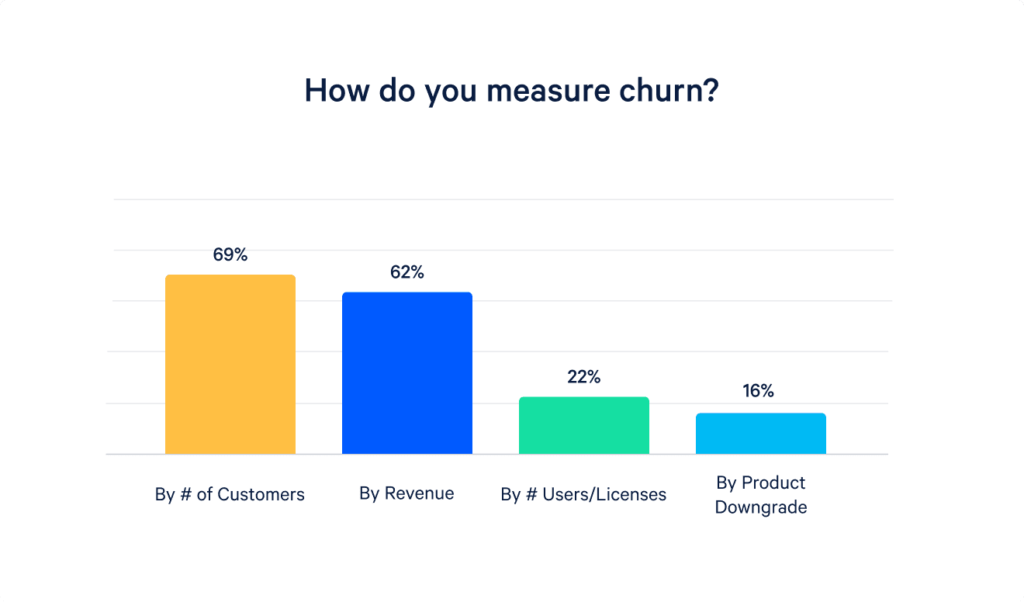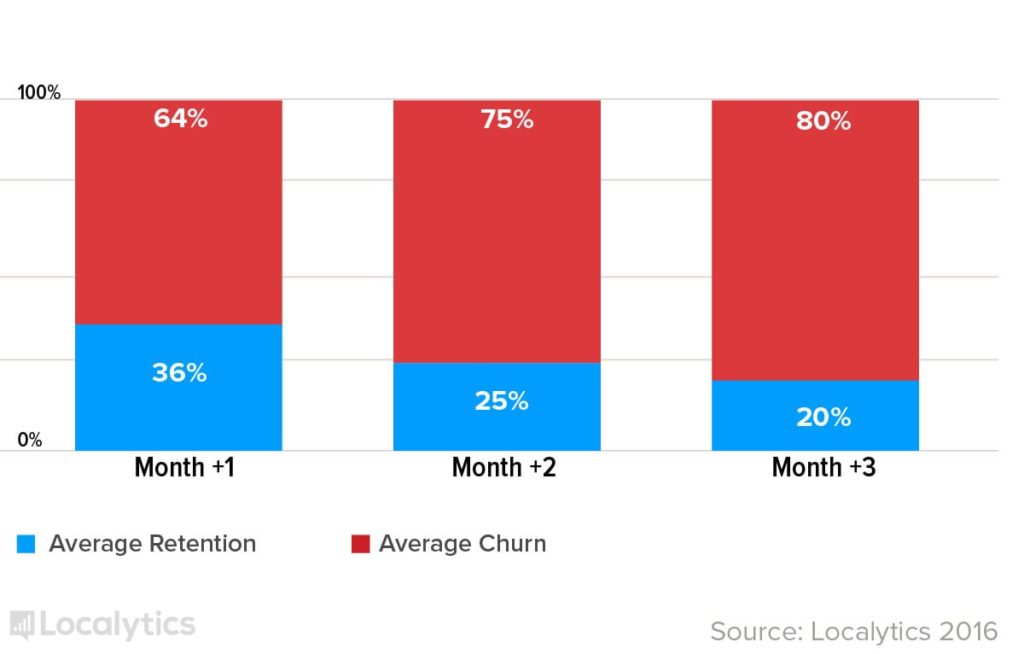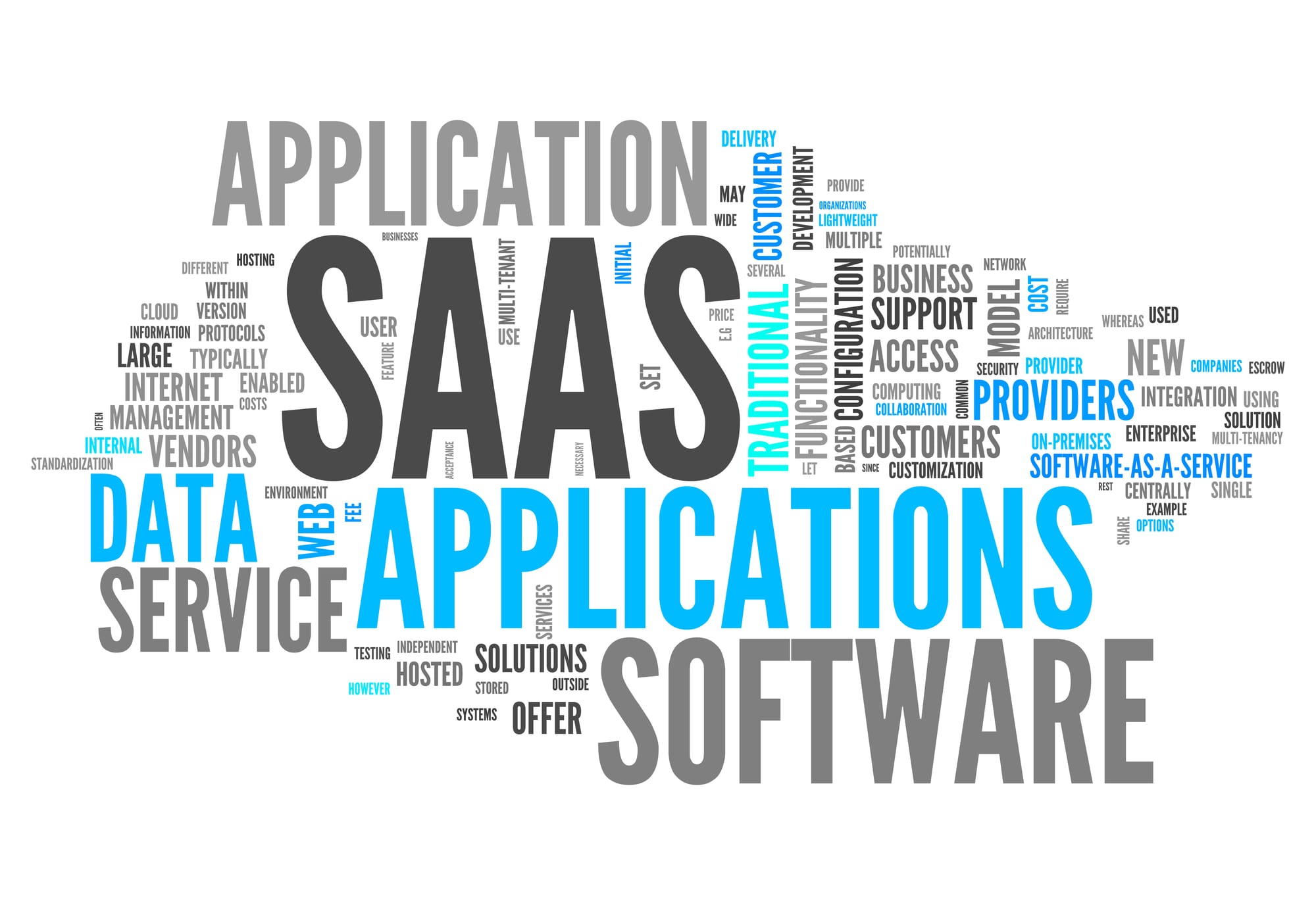Most SaaS businesses consider user acquisition their top priority. In reality, however, user retention might be just as important. As your existing customer account for 65% of a company’s business, you simply can’t expect to succeed with a leaky user base.
This means the lack of an effective churn management strategy can bring all your customer acquisition efforts to nothing.
Whether you are looking for ways to reduce your user churn or you have no idea how to calculate it in the first place, this guide might be the right place for you to start.
What’s inside:
1. Customer Churn 101: What Does It Mean and Why Does It Matter?
2. 5 Battle-Proven Strategies to Prevent SAAS Use Churn
– Understand why the churn happens
– Create a smooth onboarding process
– Keep your customer engaged
– Offer stellar support
– Build a smart cancellation process
3. Final Thoughts
So, dive right in.
Customer Churn 101: What Does It Mean and Why Does It Matter?
Let’s kick things off with the basics and explain what churn actually means. Namely, Hubspot gives a pretty solid definition to the term:
“Customer churn is the percentage of customers that stopped using your company’s product or service during a certain time frame.”
Even though we are usually talking about churn as a percentage of users, there are more ways to calculate this metric. Namely, some SaaS companies prefer measuring it by revenue, number of users/licenses, or even product downgrades.

Source – The SaaS Report 2019 – Growth, Churn, and Sales Stats
It is also worth mentioning that customer churn might happen due to many reasons, from poor customer service, insufficient functionality, pricing policies, etc.
However, not all customers churn by their choice. There’s also a so-called “involuntary churn” that might happen due to a technical error, for example, if your system can’t process the person’s credit card.
Now, let’s see what makes churn so important for SaaS business success.
For example, there are two companies. Each of them has acquired 1,000 customers with an average $50 average monthly revenue per customer and an average 6 months lifetime.
The first company has lost 150 customers and the second one – only 50 customers. This means their churn rates equal 15% and 5% for the first and the second company accordingly.
The 10% difference isn’t that stark, right?
Not if we translate that into lost revenue. Taking into account the average monthly revenue per customer ($50) and the average lifetime per customer (6 months), the first company will lose at least $45,000 and the second one – $15,000.
And, if you are a growing SaaS startup, those $30,000 of lost revenue can really make a difference.
| Company #1 | Company #2 | |
| Customers acquired | 1,000 | 1,000 |
| Average monthly revenue per customer | $50 | $50 |
| Average customer lifetime | 6 months | 6 months |
| Customers lost | 150 | 50 |
| Churn | 15% | 5% |
| Lost revenue | $45,000 | $15,000 |
So, as you can see, even the slightest churn can have a significant impact on your business. Yet, there are also less obvious ways lowering your churn can benefit your business, including:
- Reduced expenses. The cost of attracting a new customer is on average 5 times higher than the cost for retaining the current ones. Plus, it’s 4 times cheaper to upsell to the existing customers than to acquire new ones.
- Increased revenue. A 5% increase in your customer retention means up to a 95% increase in profits. That is probably because returning, loyal customers are likely to spend 67% more than the new ones.
So, if you are still focusing solely on user acquisition and don’t put enough effort into retaining your customers, there’s a chance you are missing out on some major business opportunities.
5 Battle-Tested Strategies to Prevent SAAS User Churn
Like any other SaaS business, we’ve had our share of churning users. To solve this problem, we’ve experimented with different tactics and even reached out to fellow SaaS businesses and business experts to learn how they handle churn.
Based on the expert opinions we’ve gathered as well as our own experience, here are some of the most effective tactics to consider if you are looking to ramp up your retention.
Understand Why the Churn Happens
If you want to get grip on your churn rate, the first thing you need to do is to understand why it happens. As mentioned above, there might be different reasons for SaaS user churn. In most cases, your product analytics can give you a broad picture of what is the problem.
Dig deeper into your metrics – user engagement rates will help you understand what might have caused churn.
For example, it is commonly known that most cancellations happen after a certain period of non-use. So, if a user activity has recently dropped, this might indicate a potential risk of churn. To understand the root cause of this, take a closer look at your help-desk system logs, sales call transcripts, customer surveys and interviews.
It is also much easier to fight churn once you know what exactly drives away your users. For example, if most churned customers complain about your pricing strategy, you can solve the problem by simply switching to a different model and offer free trial instead of freemium.
Taking into account that longer subscriptions have over 30% better revenue retention, you might also want to consider adding annual pricing plans.
Create a Smooth Onboarding Experience
Poor onboarding is a leading cause of SaaS churn accounting for 23% of the total lost customers. No wonder that only 10% of users who signed up for your product will return to it after one week (compared to 50% of the users who completed onboarding).
To make sure your users stick around long enough to become your loyal customers, you need to show them the actual value of your product. So, rather than letting them browse through your software and trying to figure out how things work, take them by the hand and walk through the most important steps that will help them reach their desired outcomes.
After all, the sooner they reach their goals with your software, the more likely they are to stay.
Aside from in-app onboarding experience, there are more ways you can facilitate this process:
- Create an automated onboarding email sequence prompting users to explore more of the app’s capabilities and use cases. The key is to make them helpful and consistent with the main onboarding process.
- Set up a dedicated Help Center with detailed answers to FAQs or video tutorials so that the users can learn at their own pace. There are many brilliant examples of Help Centers, including Netflix and Mailchimp.
- Offer hands-on guides and checklists to help the users get started with your product. For example, Shopify has plenty of educational content to help users launch their stores.
- Jump on a call with some of the users for a personal demo. Sometimes, it’s really better to show than tell, as in case of trying to explain a complex software to non-tech users.
Keep Your Customers Engaged
Even if the users successfully complete your onboarding process, up to 71% of them might still churn within the first 3 months after the sign-up.

Source – Overall App Benchmarks H2 2018
That is why it is crucial to keep in touch with your new customers even after the onboarding is complete. This process, also known as “activation”, is needed to make sure your users understand the real value offered by your software and can use it to its fullest.
Email marketing is considered to be one of the most effective tools for user retention by 56% of US marketers. A case in point is the sequence of 17 targeted emails used by BareMetrics to activate the new customers that helped them re-engage about 15% of the users who were about to churn.
So, if you want to “activate” your users (or re-engage the least active ones), try setting up inbound email campaigns prompting the users to explore the product or share bite-sized knowledge – hacks, pro tips – on how to make maximum use of it.
Aside from email, product-related webinars can also be a great way to keep your users engaged as well as inform them about the latest product updates or pro features.
Offer Stellar Support
Poor customer service is one of the most common reasons for SaaS churn. Namely, 89% of users will switch to your competitor if you fail to provide the customer experience they expect, according to Oracle.
Luckily, this type of churn is also easy to fix. All you need to do is to show your users that you genuinely care about them: help them solve any problems they face with your product or at least respond to their complaints/requests in a timely manner (which, sadly, only 21% of companies do).
Here are some of the key rules of an outstanding customer service strategy:
- Prioritize customer success
- Be easily accessible across different channels
- Strive to build a personal relationship with each user
- Consider each complaint a chance to delight your users
- Be consistent with the quality of service you are providing
If your users know that you are there for them, ready to help, they won’t consider leaving you as easily.
Build a smart cancellation process
Once your users decide to leave, there’s little you can do to make them change their mind. However, this doesn’t mean you should stand by and watch them go.
First of all, you can find out why they decided to leave. Don’t hesitate to ask your users for feedback. Have them fill out a short survey or reach out to them afterward. Drawing on this information you can improve your product and prevent other users from churning in the future.
For example, HotJar used this approach to find out the top reasons for customer churn and build a strategy around that knowledge to address those issues.
A less popular strategy, although a very effective one, is to remove self-service account cancellation. And this doesn’t mean you should make it difficult for the users to cancel your subscription. Just make sure they don’t slip out without saying a word!
Final Thoughts
Regardless of your retention strategy or quality of your customer service, you can never completely eliminate churn. There will always be users who leave you – they might go out of business or hire new executives who will decide to switch vendors, some of them might change their business area or simply outgrow your product. And that is totally normal.
The median churn rate for SaaS businesses is 4.79%, according to the Recurly Research. So as long as you manage to keep those 95% of users happy and engaged, it’s alright.
Once your churn spikes, it’s a clear signal that you’re doing something wrong.
saas concept illustration -DepositPhotos


